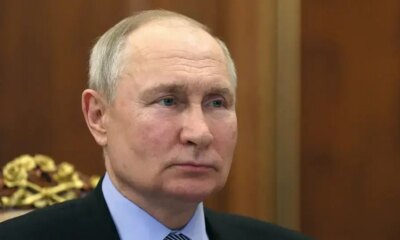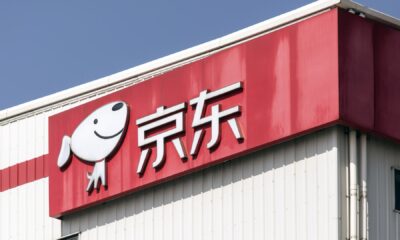Finance
Intel is weighing options including splitting foundries to stem losses
(Bloomberg) — Intel Corp. is teaming up with investment bankers to help it weather the toughest period in its 56-year history, according to people familiar with the matter.
Most read from Bloomberg
The company is discussing various scenarios, including a split of its product design and manufacturing operations, and which factory projects might be scrapped, said the people, who asked not to be identified because the deliberations are private.
Morgan Stanley and Goldman Sachs Group Inc., Intel’s longtime bankers, have provided guidance on the options, including potential mergers and acquisitions, the people said. The discussions have only become more urgent since the Santa Clara, California-based company released a dismal earnings report, sending its shares tumbling to their lowest level since 2013.
The various options are expected to be presented at a board meeting in September, they said.
No major move is planned and discussions are still at an early stage, the people warned. A representative for Intel declined to comment, while Morgan Stanley and Goldman Sachs did not immediately respond to requests for comment.
A possible breakup or sale of Intel’s foundry division, which focuses on producing chips for outside customers, would be a game changer for CEO Pat Gelsinger. Gelsinger sees the company as key to restoring Intel’s position among chip makers and hoped it would eventually compete with companies like Taiwan Semiconductor Manufacturing Co., which pioneered the foundry industry.
But it’s more likely that Intel will take a less dramatic step before it reaches that point, such as delaying some of its expansion plans, the people said. The company has already signed project financing agreements with Brookfield Infrastructure Partners and Apollo Global Management.
Intel’s Gelsinger is running out of time to pull off a much-needed turnaround. He’s trying to expand the chipmaker’s factory network as sales decline — a money-losing proposition. The company posted a net loss of $1.61 billion last quarter, and analysts are predicting more red ink in the coming year.
Gelsinger, an Intel veteran who left the company for more than a decade, took the helm in 2021 and vowed to restore the company’s technological edge. Under previous CEOs, the chip pioneer had lost market share and its long-vaunted reputation for innovation.
But his comeback plan proved too ambitious and the company had to scale back. When reporting earnings earlier this month, Intel announced plans to cut about 15,000 jobs and reduce capital expenditures. The company even suspended its long-prized dividend.
“It’s been a tough few weeks,” Gelsinger told investors at the Deutsche Bank Technology Conference on Thursday. The company tried to paint a “clear picture” of next steps during its earnings report, he said. “It is clear that the market did not react positively. We understand that.”
Adding to the unrest, director Lip-Bu Tan abruptly resigned from the board last week. The semiconductor veteran, who was brought in two years ago to help with the comeback, cited scheduling obligations. But his departure removed one of the few directors with industry knowledge and experience.
Shares of Intel are down 60% this year, compared with a 20% gain for the Philadelphia Stock Exchange Semiconductor Index, a benchmark for the chip industry.
Gelsinger’s comeback plan revolved around rearranging Intel into two groups: one that designs chips and another that produces them. The production branch would then be free to do business with other companies.
But the largest customer of Intel’s factory network is still Intel. Until the foundry company has more external customers, it will struggle financially. It reported operating losses of $2.8 billion in the most recent quarter and is now on track for a worse year than expected.
With a market value of $86 billion, Intel has fallen out of the top 10 largest chipmakers in the world by that measure. It’s the second-worst performance on Philadelphia’s chip index this year and suffers compared to the stratospheric gains of Nvidia Corp., a company on track to double Intel’s revenue by 2024.
In 2021, Intel was three times the size of Nvidia in terms of revenue.
(Updates with Intel stock performance in 13th paragraph.)
Most read from Bloomberg Businessweek
©2024 BloombergLP







